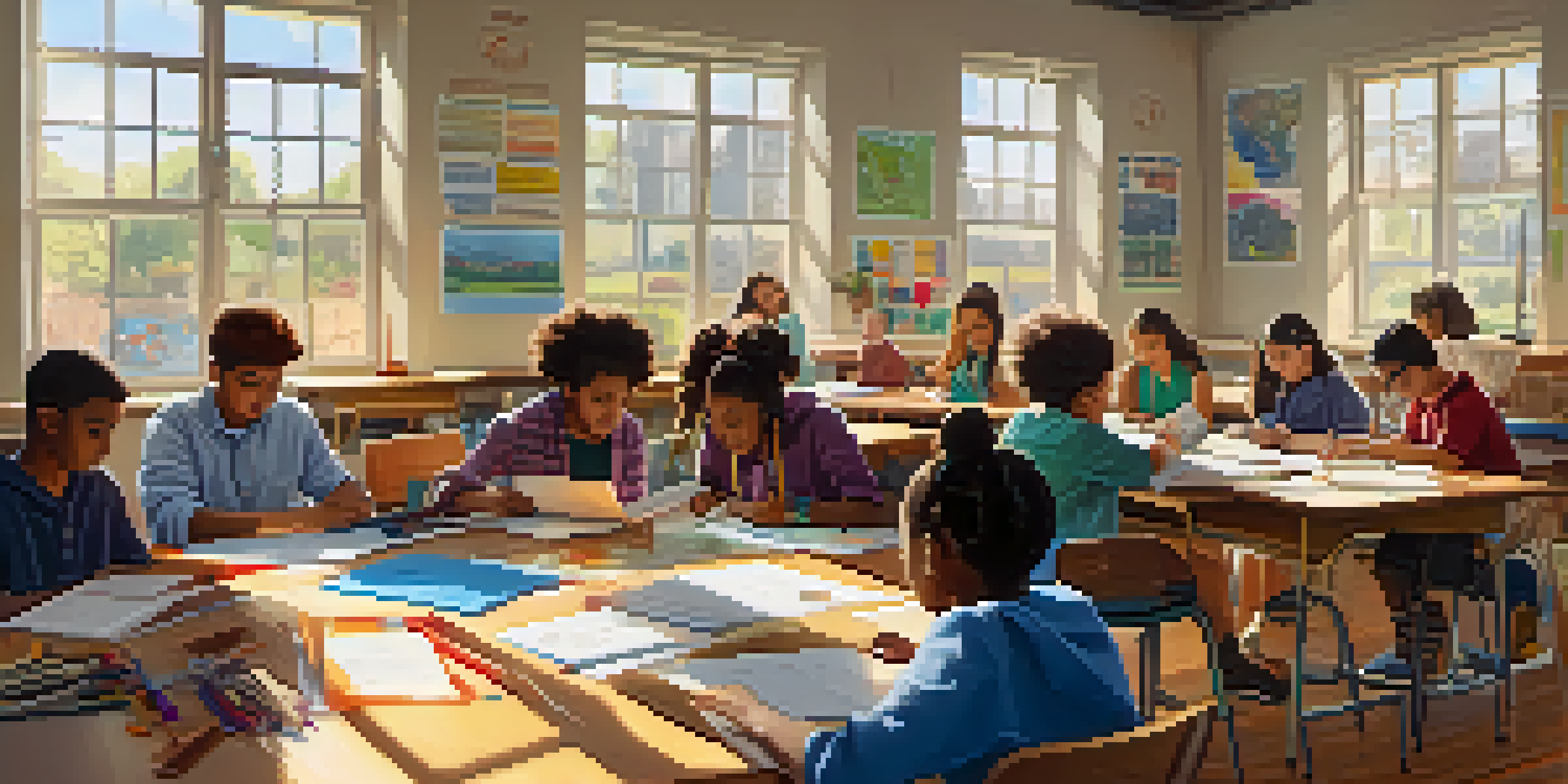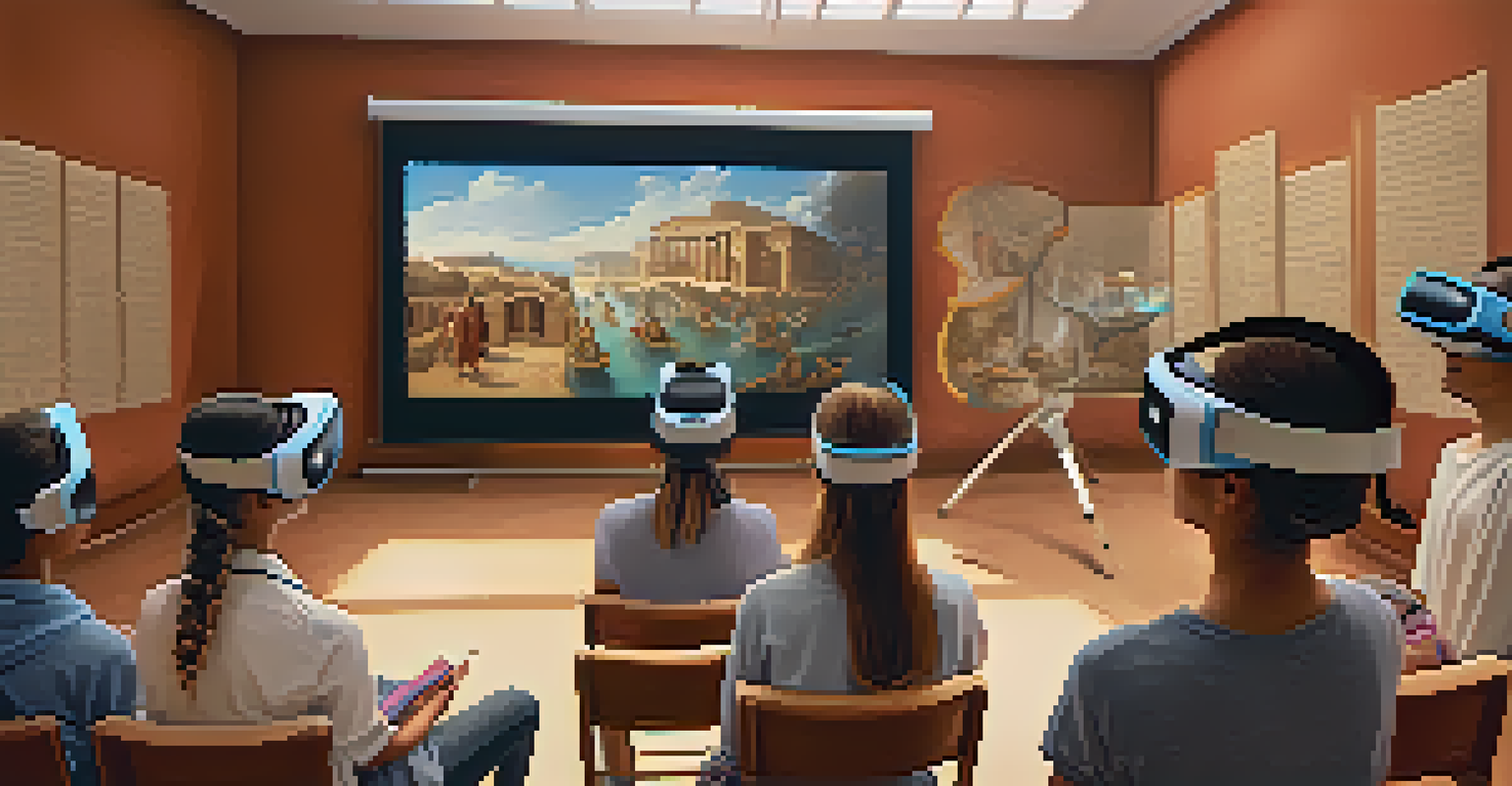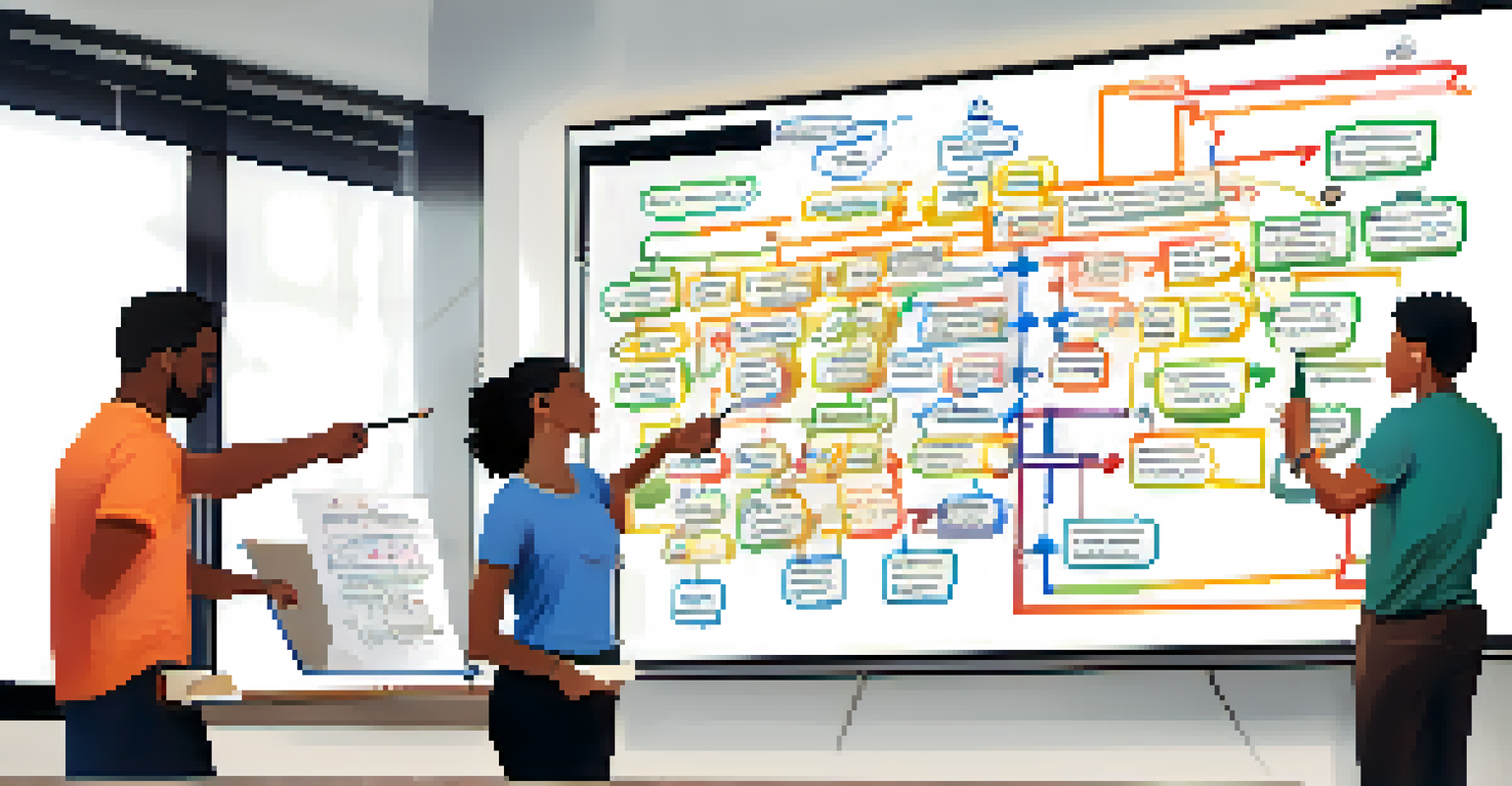Exploring the Impact of Visual Learning in Constructivism

Understanding Constructivism in Education
Constructivism is an educational philosophy that emphasizes the role of learners in constructing their own understanding and knowledge. This approach suggests that learning is an active process where students build on prior knowledge through experiences. Instead of passively receiving information, learners engage with materials, collaborate with peers, and reflect on their experiences to form new insights.
The only way to learn mathematics is to do mathematics.
In a constructivist classroom, the teacher acts more as a facilitator than a traditional instructor. This shift in roles encourages students to take ownership of their learning journey. They explore concepts through projects, discussions, and problem-solving activities, making education a more dynamic and individualized experience.
By fostering an environment where students can ask questions, experiment, and express their thoughts, constructivism promotes deeper understanding. Visual learning tools, such as diagrams, videos, and infographics, play a vital role in this process, enhancing engagement and comprehension.
The Role of Visual Learning in Constructivism
Visual learning refers to the use of images, diagrams, and other visual aids to enhance understanding and retention of information. In constructivist settings, visual tools serve as powerful catalysts for learning, helping students visualize complex concepts and relationships. This method aligns well with the idea that learners construct knowledge through meaningful interactions with their environment.

For instance, consider a science lesson about ecosystems. Using visual aids like charts or models allows students to see the interconnections between species and their habitats. This tangible representation can spark curiosity, prompting students to ask questions and explore further, embodying the constructivist approach.
Constructivism Empowers Learners
Constructivism encourages students to actively engage in their learning process, allowing them to build knowledge through experiences and collaboration.
Moreover, visual learning caters to diverse learning styles. Some students may find it easier to grasp ideas through visual means rather than through text alone. By integrating visual elements in lessons, educators can create a more inclusive and effective learning atmosphere.
Benefits of Visual Learning in Constructivist Frameworks
One of the most significant benefits of visual learning in a constructivist framework is improved retention. Research shows that people often remember visuals better than text. When students engage with visual materials, they are more likely to recall information later, leading to a deeper understanding of the subject matter.
Tell me and I forget, teach me and I remember, involve me and I learn.
Additionally, visual aids can simplify complex ideas, breaking them down into digestible parts. For example, a flowchart can illustrate a process step-by-step, making it easier for students to follow along and grasp the overall concept. This simplification supports the constructivist belief that learners need to build on prior knowledge incrementally.
Furthermore, visual learning encourages collaboration and discussion among students. As they work together to interpret visuals, they share perspectives and insights, enriching their learning experience. This collaborative aspect is a cornerstone of constructivist education, where peer interactions are vital for knowledge construction.
Integrating Technology for Visual Learning
In today's digital age, technology offers a plethora of tools that enhance visual learning. Applications like interactive whiteboards, educational software, and online resources allow educators to create engaging visual content that can capture students' attention. These tools can transform traditional lessons into interactive experiences, aligning perfectly with constructivist principles.
For instance, virtual reality (VR) can immerse students in historical events or scientific explorations, providing a visual and experiential learning opportunity. This type of engagement not only makes learning more enjoyable but also helps students form connections they might miss through conventional methods.
Visual Learning Enhances Understanding
Using visual aids in education helps students grasp complex concepts more easily and improves retention of information.
Moreover, technology facilitates personalized learning experiences. Students can explore topics at their own pace, revisiting visual materials as needed. This adaptability is crucial in a constructivist framework, where individual learning paths are respected and nurtured.
Challenges of Visual Learning in Constructivism
While the benefits of visual learning are evident, there are challenges too. One major hurdle is ensuring that visual aids are appropriately designed and relevant to the content. Poorly designed visuals can lead to confusion rather than clarity, undermining the constructivist approach. Educators must carefully curate or create visuals that truly enhance understanding.
Another challenge is the potential for over-reliance on visual aids. While visuals are helpful, they should not replace critical thinking and problem-solving activities. Educators need to strike a balance between using visual tools and encouraging students to engage in deeper analytical processes.
Lastly, not all students learn the same way. Some may struggle with visual materials, preferring auditory or kinesthetic learning styles. It’s essential for educators to provide a mix of teaching methods to ensure that all students can thrive in a constructivist environment.
Real-World Applications of Visual Learning
Visual learning is not just an abstract concept; it has real-world applications across various fields. For example, in healthcare, medical professionals often use visual simulations and models to train students. These visual experiences enable learners to understand complex medical procedures and anatomy, illustrating the effectiveness of visual learning in practical settings.
In businesses, visual tools like infographics and dashboards are used to convey data insights quickly and effectively. This application mirrors constructivist principles, where visuals help teams collaborate and make informed decisions based on shared understanding.
Technology Transforms Learning Spaces
Innovative tools like VR and AR are reshaping visual learning, making education more interactive and personalized for students.
Similarly, in design and architecture, visual learning is fundamental. Students in these fields rely heavily on sketches, models, and digital renderings to communicate their ideas. This reliance on visual communication showcases how constructivist methods can lead to successful outcomes in various professional arenas.
Future of Visual Learning in Constructivist Education
As education continues to evolve, the future of visual learning in constructivist frameworks looks promising. Innovations like augmented reality (AR) and artificial intelligence (AI) are set to revolutionize how visual aids are used in classrooms. These technologies can provide interactive and personalized learning experiences that cater to individual student needs.
Moreover, as educators become more aware of the importance of visual learning, we can expect to see a greater emphasis on integrating visuals into curricula across subjects. The shift towards project-based learning, where visuals play a key role, aligns well with the constructivist philosophy of learning by doing.

Ultimately, the synergy between visual learning and constructivist education has the potential to create more engaging, effective, and inclusive learning environments. By embracing this approach, we can prepare students not only to understand complex ideas but also to apply their knowledge in real-world contexts.